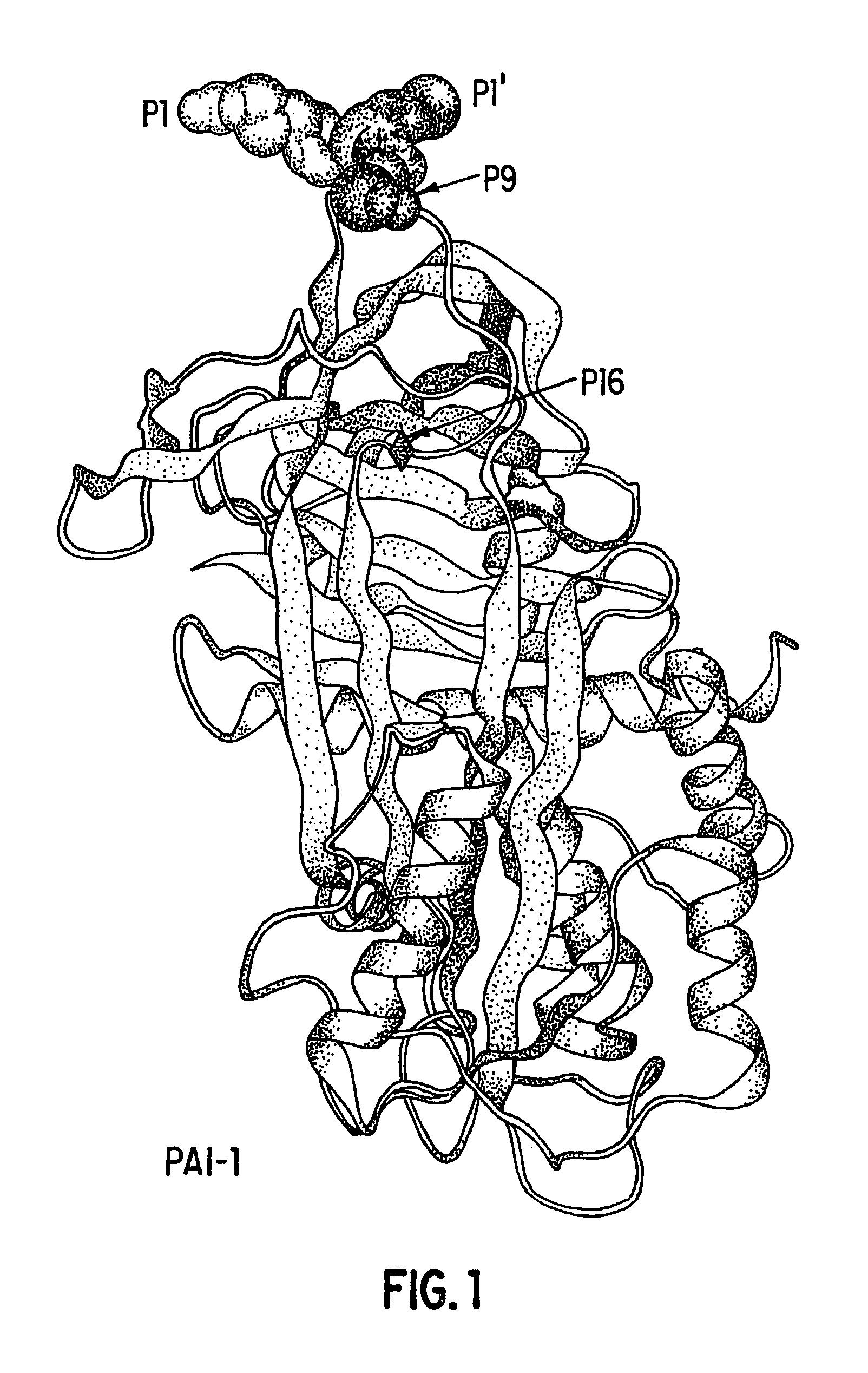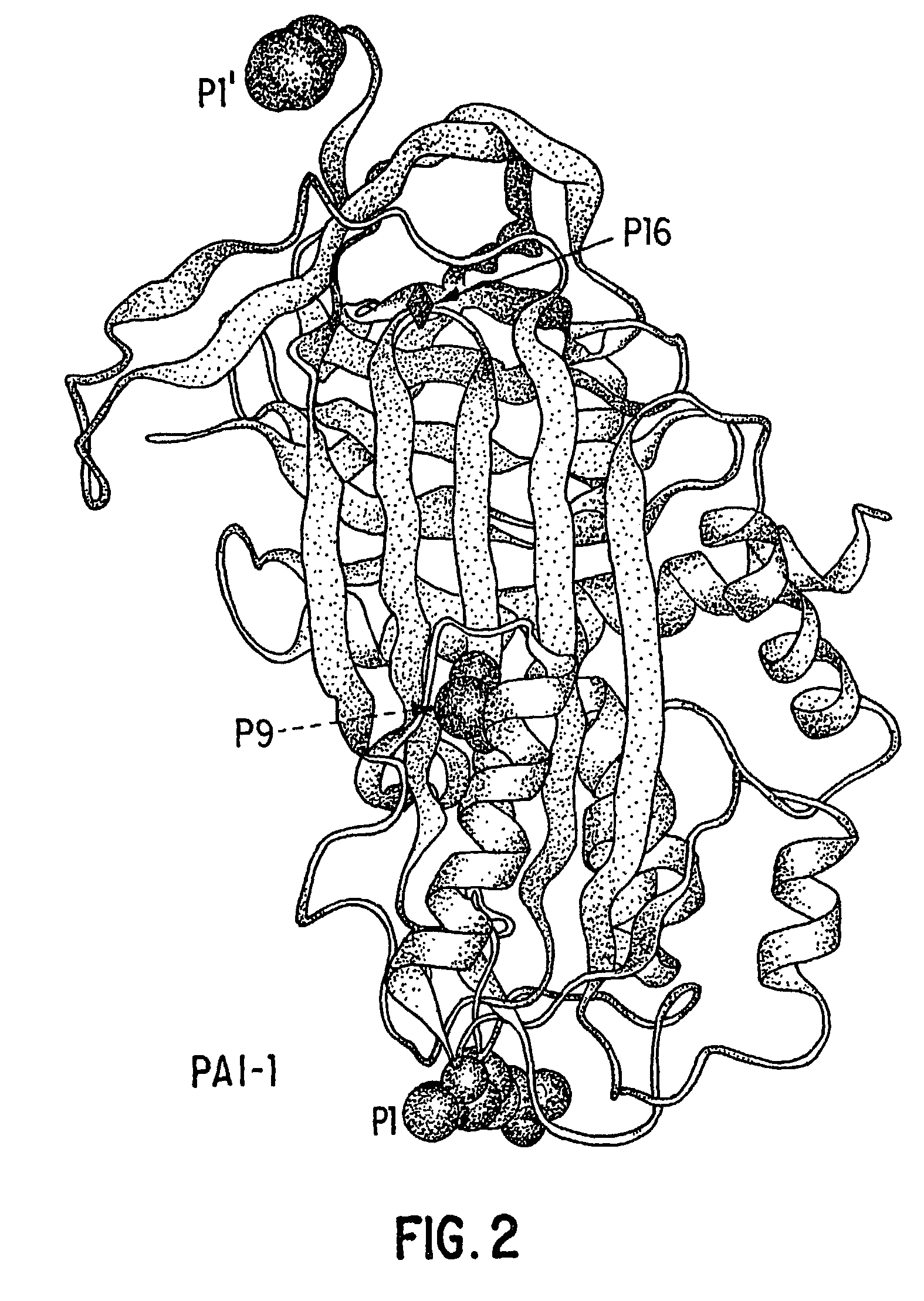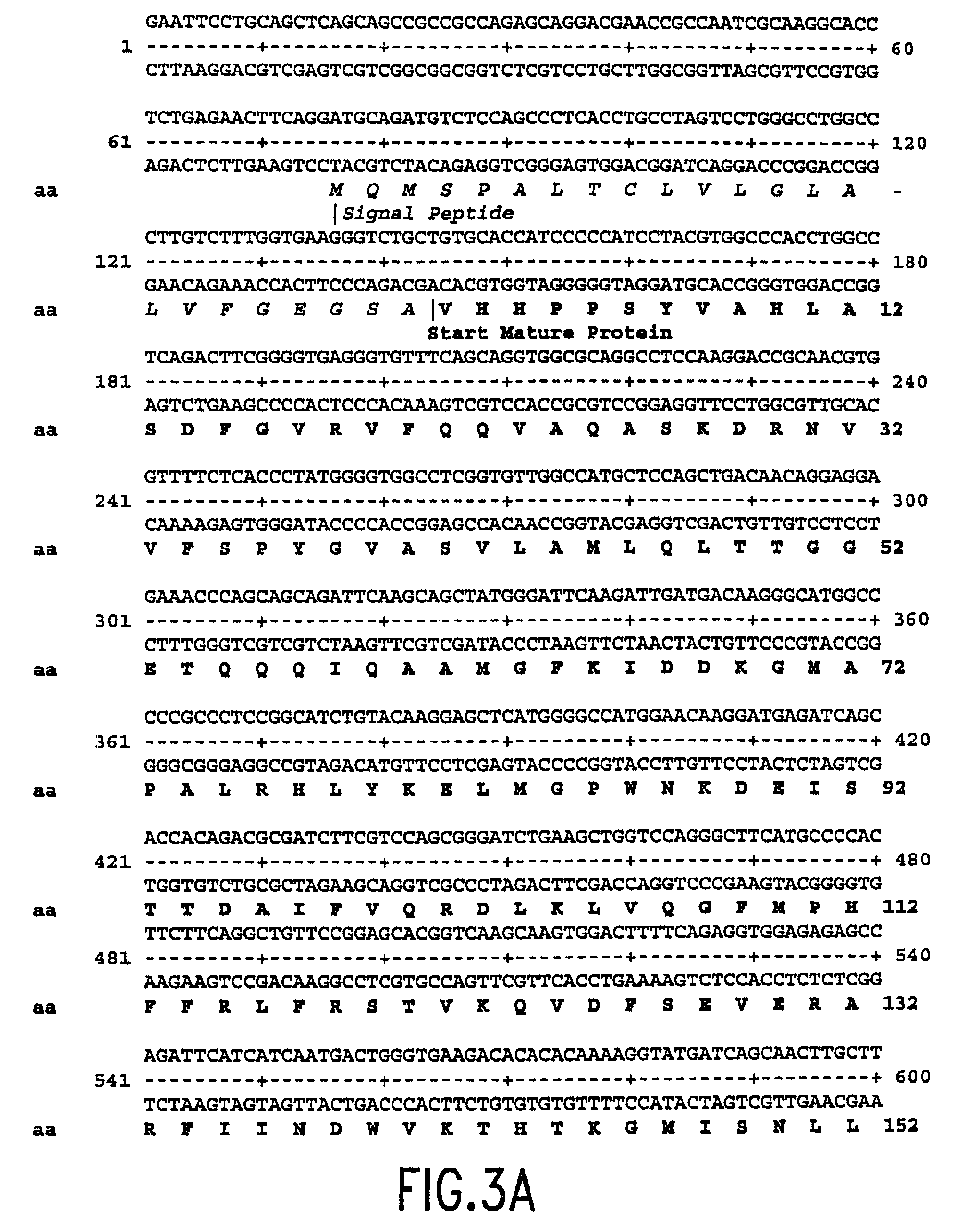Mutant plasminogen activator-inhibitor type 1 (PAI-1) and uses thereof
a technology of plasminogen activator and inhibitor, which is applied in the field of biochemistry and medicine, can solve the problems of increased expression of upa, increased emphysema, and increased risk of emphysema in patients with sub>1/sub>at, and achieves the effects of preventing arterial stenosis, increasing expression, and high levels of upa
- Summary
- Abstract
- Description
- Claims
- Application Information
AI Technical Summary
Benefits of technology
Problems solved by technology
Method used
Image
Examples
example i
Inhibition of Elastase by PAI-1 Mutants
[0210]Studies were performed to test the ability of PAI-1 mutants to bind to elastase in a manner which permitted inhibition elastase enzymatic activity. Also tested was the ability of the PAI-1 mutant to stimulate endocytosis of elastase the dependence of this internalization on LDL-like receptor proteins.
Assay for Elastase Activity and its Inhibition
[0211]Neutrophil elastase and pancreatic elastase (1 μg / ml) were incubated with increasing concentrations of either wtPAI-1 or P1-Ala-PA-1, or α1AT for 30 min at room temperature in 50 mM Tris pH 7.5, 150 mM NaCl, 100 μg / ml BSA, 0.01% Tween-80 (100 μl). The chromogenic substrate Ala-Ala-Ala-pNA (Sigma) (100 μl) was added to 1 mM final concentration. The change in absorbance at 405 nm was measured at 37° C. for 30 min., and the rate of change was calculated for the last 15 min.
SDS-PAGE Analysis of Complex Formation between PAI-1 and Elastase
[0212]Neutrophil elastase (0.45 mg / ml) and pancreatic elas...
example ii
PAI-1 and Vitronectin Promote the Cellular Clearance of Thrombin by LDL-Receptor Related Proteins 1 and 2
[0217](see: Stefansson et al., J. Biol. Chem. 271:8215-8229 (1996 Apr. 5)
[0218]The following study evaluated cell-mediated endocytosis as a potential mechanism for regulating levels of extravascular thrombin and determined whether PAI-1, Vn and receptors of the LDLR family have roles in the process.
[0219]I. Materials and Methods
[0220]Proteins
[0221]Human α-thrombin was obtained from Dr. F. Church (University of North Carolina, Chapel Hill, N.C.) or purchased from Enzyme Research Laboratories (South Bend, Ind.). Human HCII was obtained from Dr. F. Church. Human ATIII was obtained from Dr. K. Ingham (American Red Cross, Rockville, Md.). Human α1AT was purchased from Sigma Chemical Co. (St. Louis, Mo.). Human fibrinogen was purchased from Enzyme Research Laboratories (South Bend, Ind.). D-phenylalanyl-L-prolyl-L-arginine chloromethyl ketone (PPACK) was purchased from Calbiochem (La J...
example iii
Interaction of Different Conformers of PAI-1 with Vitronectin (Vn)
[0243]The inventors examined the binding of 6 different conformational forms of PAI-1 to both native and urea-treated Vn. The results indicate that only the active form of PAI-1 binds to Vn with high affinity and suggest that the Vn-binding domain of PAI-1 is sensitive to the conformation of PAI-1 and thus its activity state. The findings suggest that the binding epitope on PAI-1 may have evolved such sensitivity to prevent the accumulation of inactive PAI-1 at sites of subcellular attachment.
Materials
[0244]Purified PAI-1 either, active (>95%) or latent (>95%) were obtained from Molecular Innovations (Royal Oak, Mich.). The PAI-1 mutant Q123K has been previously described, and was purified to homogeneity in either the active or latent conformation as described (Kounnas, M. Z., et al., (1992) J. Biol. Chem. 267:12420-12423). Purified Vn, both native (Naski, M. C. et al., (1993) supra) (“nVn”) and urea-purified (“dVn”) ...
PUM
| Property | Measurement | Unit |
|---|---|---|
| molecular weight | aaaaa | aaaaa |
| concentrations | aaaaa | aaaaa |
| concentrations | aaaaa | aaaaa |
Abstract
Description
Claims
Application Information
 Login to View More
Login to View More - R&D
- Intellectual Property
- Life Sciences
- Materials
- Tech Scout
- Unparalleled Data Quality
- Higher Quality Content
- 60% Fewer Hallucinations
Browse by: Latest US Patents, China's latest patents, Technical Efficacy Thesaurus, Application Domain, Technology Topic, Popular Technical Reports.
© 2025 PatSnap. All rights reserved.Legal|Privacy policy|Modern Slavery Act Transparency Statement|Sitemap|About US| Contact US: help@patsnap.com



